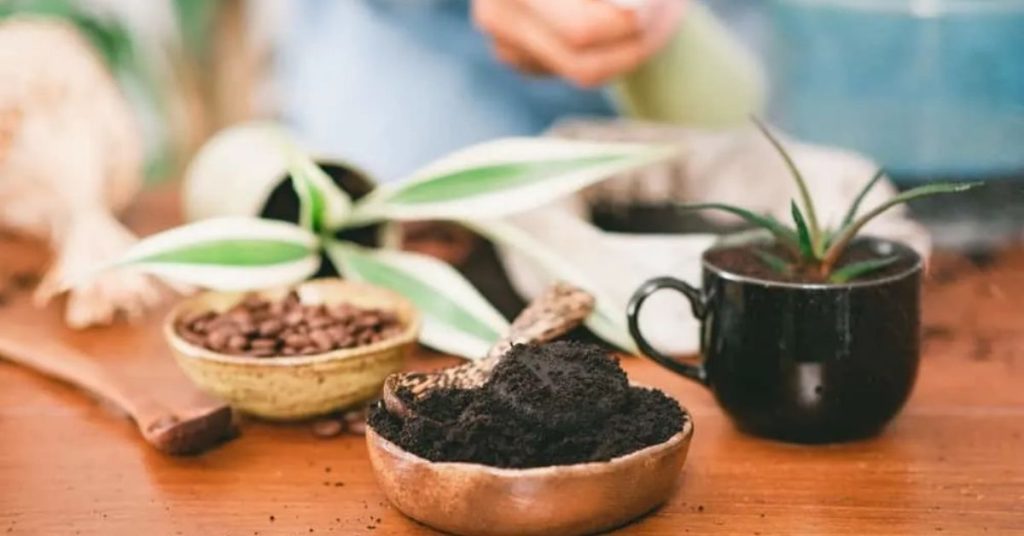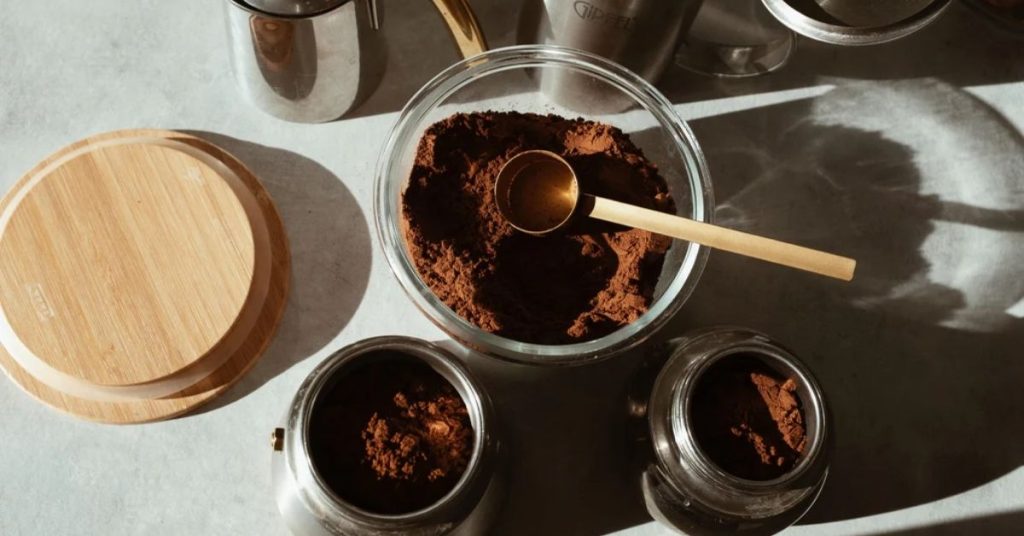Benefits of Using Coffee Grounds for Plants: A Comprehensive Guide
Coffee is one of the most popular drinks in the world, but did you know that the coffee grounds left over after brewing your morning cup of joe can also be used to benefit your plants? Are not? Yes, coffee grounds have a number of benefits for plants, from providing essential nutrients to deterring pests. As someone who is passionate about both coffee and gardening, I have found that applying coffee grounds in my garden has been a game changer. Join Aspect Coffee Works in discovering the fascinating benefits of coffee grounds for plants, bridging the gap between your morning ritual and lush greenery.
Contents
- 1 What is Using Coffee Grounds as Fertilizer?
- 2 Role of Coffee Grounds in Compost
- 3 Benefits of making compost of Coffee Grounds
- 4 How to Use Coffee Grounds for Plants
- 5 Common Misconceptions and Risks When Using Coffee Grounds as Mulch
- 6 Frequently Asked Questions
- 6.1 Which plants like coffee grounds most?
- 6.2 Which plants thrive with coffee grounds in garden soil?
- 6.3 Are there any plants that should not be fertilized with coffee grounds?
- 6.4 What are the benefits of Using Coffee Grounds in the Garden for plants and trees?
- 6.5 How can coffee grounds improve the health of plants in a vegetable garden?
- 6.6 Are there any downsides to using coffee grounds as a fertilizer for plants?
- 7 Conclusion
What is Using Coffee Grounds as Fertilizer?

As a coffee lover, I often find myself wondering what to do with the leftover coffee grounds. It turns out that coffee grounds can be used as a growth enhancer for plants. Applying coffee grounds as fertilizer is a simple and effective way to add nutrients to the soil and promote plant development.
Coffee grounds are a rich source of nitrogen, which is essential for plant development. Nitrogen is a key component of chlorophyll, the molecule that gives plants their green color and allows them to photosynthesize. In addition to nitrogen, coffee grounds also contain other nutrients that are beneficial to plants, such as potassium, phosphorus, and magnesium.
When applying coffee grounds as a growth enhancer, it is important to keep a few things in mind. First, coffee grounds are acidic, so they are best used on plants that prefer acidic soil, such as blueberries, azaleas, and rhododendrons. If you are utilizing coffee grounds on plants that prefer neutral or alkaline soil, such as tomatoes or peppers, it is a good idea to mix the coffee grounds with other organic matter to balance the pH.
Second, coffee grounds should be used in moderation. While coffee grounds are a great source of nutrients, too much of a good thing can be harmful. Excessive use of coffee grounds can lead to nitrogen burn, a condition in which plants become over-fertilized and suffer from leaf scorching and other symptoms.
In summary, applying coffee grounds as a growth enhancer is a great way to recycle waste and promote plant development. However, it is important to utilize coffee grounds in moderation and to choose the right plants for this type of growth enhancer. With a little care and attention, coffee grounds can be a valuable addition to any gardener’s toolkit.
Role of Coffee Grounds in Compost

As a gardener, I know that composting is an excellent way to enrich the soil with nutrients and improve plant development. Coffee grounds are a great addition to compost because they are rich in nitrogen, phosphorus, and potassium. These nutrients are essential for plant development and development.
When applying coffee grounds in decomposed material, it is important to remember that they are considered a green material. This means that they are high in nitrogen and help to break down other organic matter in the compost pile. To balance the green material, it is recommended to use brown material, such as leaves, straw, or shredded newspaper.
Coffee filters can also be added to the compost pile along with the coffee grounds. They are considered a brown material and help to balance the nitrogen-rich coffee grounds. It is important to note that only unbleached filters should be used in decomposed material because bleached filters can contain harmful chemicals.
It is important to apply coffee grounds in moderation in the decomposition pile. Too much coffee grounds can create an imbalance in the decomposed material and make it too acidic. A good rule of thumb is to use no more than 25% coffee grounds in the decomposition pile.
Utilizing coffee grounds in compost is an excellent way to recycle waste and provide essential nutrients to plants. With proper use, coffee grounds can help to improve the health and growth of your garden.
Benefits of making compost of Coffee Grounds

As a gardener, I have found that making compost from coffee grounds has many benefits for plants. Here are some of the reasons why:
Nutrient Enrichment
Coffee grounds are rich in nitrogen, phosphorus, and potassium, which are essential nutrients for plant growth. According to The Spruce, the organic matter in coffee grounds includes 2% nitrogen, 0.06% phosphorous, 0.6% potassium, and micronutrients like calcium, magnesium, boron, copper, iron, and zinc that benefit plants by encouraging healthy growth. Adding coffee grounds to compost helps to enrich the soil with these nutrients, which can improve the health and productivity of plants.
Pest Repellent
Coffee grounds can also help to repel pests in the garden. According to Real Simple, coffee grounds contain caffeine and other compounds that are toxic to insects like slugs, snails, and ants. Mixing coffee grounds into decomposed material can help to deter these pests from damaging plants and can reduce the need for chemical pesticides.
Disease Prevention
In addition to repelling pests, coffee grounds can also help to prevent plant diseases. According to Gardening Know How, the antibacterial and antifungal properties of coffee grounds can help suppress diseases like Fusarium, Pythium, and Sclerotinia. Adding coffee grounds to decomposed material can help to create a healthy, disease-resistant environment for plants to grow in.
Overall, making compost from coffee grounds is an easy and effective way to improve the health and productivity of plants. By enriching the soil with essential nutrients, repelling pests, and preventing diseases, coffee ground decomposed material can help to create a thriving, sustainable garden.
How to Use Coffee Grounds for Plants

As a professional gardener, I have found that coffee grounds can be a great addition to your gardening routine. Here are three ways to apply coffee grounds to your plants.
Direct Application
One way to apply coffee grounds is to add used coffee grounds directly to the soil. Coffee grounds are rich in nitrogen, which is an essential nutrient for plant development. Simply sprinkle the coffee grounds around the base of your plants and work them into the soil with a garden fork or hoe. Be sure to apply coffee grounds in moderation, as too much can make the soil too acidic and harm your plants.
Composting
Another way to employ coffee grounds is to add the grounds directly to your decomposition pile. Coffee grounds are a great source of nitrogen, which will help your decomposed material break down faster. Mix the coffee dregs with organic matter, such as leaves and grass clippings, to create a nutrient-rich decomposed material that will benefit your plants.
Liquid Fertilizer
Finally, you can make a liquid fertilizer from coffee grounds. Simply mix the coffee grounds with water and let the mixture steep for a few days. Strain out the coffee grounds and use the liquid to water your plants. This liquid growth enhancer is rich in nitrogen and other nutrients that your plants need to thrive.
In conclusion, coffee grounds can be a great addition to your gardening routine. Whether you use them for direct application, composting, or liquid growth enhancer, coffee grounds can provide your plants with essential nutrients that will help them grow strong and healthy.
Common Misconceptions and Risks When Using Coffee Grounds as Mulch

When it comes to utilizing coffee remnants for plant nourishment, there are a few common misconceptions and risks that gardeners should be aware of. In this section, I will discuss two of the most important ones: acidity levels and over-fertilization.
Acidity Levels
One of the biggest misconceptions about coffee grounds is that they are highly acidic and can harm plants. While it is true that coffee grounds are acidic, the pH level of used coffee grounds is typically around 6.5 to 6.8, which is only slightly acidic. This pH level is similar to that of many common garden soils, so incorporating coffee grounds into your garden is unlikely to cause any harm.
However, it is important to note that some plants prefer more acidic soil, while others prefer soil with a more neutral pH. If you are unsure about the pH level of your soil or the needs of your plants, it is always a good idea to do some research or consult with a gardening expert.
Over-Fertilization
Another risk associated with utilizing coffee remnants for plant nourishment is over-fertilization. While coffee grounds are a great source of nitrogen, phosphorus, and potassium, adding too much of them to your garden can lead to over-fertilization. This can cause plants to grow too quickly, which can make them more susceptible to disease and pests.
To avoid over-fertilization, it is best to use coffee grounds as a supplement to other types of mulch, rather than as the sole source of mulch in your garden. It is also important to use coffee grounds in moderation and to mix them with other types of organic matter, such as leaves or grass clippings.
In conclusion, while there are some risks associated with using coffee grounds as mulch, they can be a great addition to your garden if used properly. By being aware of the acidity levels of your soil and the needs of your plants, as well as avoiding over-fertilization, you can enjoy the benefits of coffee grounds without any negative effects on your garden.
Frequently Asked Questions
Which plants like coffee grounds most?
Coffee grounds can be beneficial for many different plants, but some plants benefit more than others. Acid-loving plants like blueberries, azaleas, rhododendrons, and camellias appreciate the acidic nature of coffee grounds. Coffee grounds can also be beneficial for plants that prefer slightly acidic soil, such as tomatoes, roses, and hydrangeas.
Which plants thrive with coffee grounds in garden soil?
Many plants can thrive with coffee grounds in soil, as long as the grounds are used in moderation. Coffee grounds can improve soil structure, increase water retention, and provide nutrients to plants. Vegetables like tomatoes, peppers, and eggplants can benefit from coffee grounds, as can fruit trees like apples, peaches, and cherries.
Are there any plants that should not be fertilized with coffee grounds?
While coffee grounds can be beneficial for many plants, some plants should not be fertilized with used grounds. Plants that prefer alkaline soil, such as asparagus, parsley, and most herbs, may not appreciate the acidity of coffee grounds. Additionally, plants that are sensitive to caffeine, such as some types of ferns, may not do well with coffee grounds.
What are the benefits of Using Coffee Grounds in the Garden for plants and trees?
Using coffee grounds in the garden can provide several benefits for plants and trees. Coffee grounds contain nitrogen, phosphorus, and potassium, which are essential nutrients for plant growth. They can also help to improve soil structure, increase water retention, and promote healthy microorganisms in the soil. Additionally, coffee grounds can help to repel pests like slugs and snails.
How can coffee grounds improve the health of plants in a vegetable garden?
Coffee grounds can be especially beneficial for plants in a vegetable garden. They can help to improve soil structure and increase water retention, which can lead to healthier and more productive plants. Additionally, coffee grounds can provide essential nutrients like nitrogen, phosphorus, and potassium, which are important for plant growth and development.
Are there any downsides to using coffee grounds as a fertilizer for plants?
While coffee grounds can provide many benefits for plants, there are some potential downsides to using them as a fertilizer. Coffee grounds can be acidic, which can be detrimental to plants that prefer alkaline soil. Additionally, using too many coffee grounds can lead to nitrogen burn, which can damage plants. It’s important to use coffee grounds in moderation and to mix them with other organic matter to avoid these issues.
Conclusion
In conclusion, using coffee grinds for gardening can provide various benefits to your garden. They are a good source of nitrogen, which is an essential nutrient for plants. Additionally, coffee grounds can improve soil drainage, structure, aeration, and water retention.
However, it is important to note that coffee grounds should be used in moderation and not applied directly to the plant roots. They can be too acidic for some plants and can inhibit growth in certain plants. Therefore, it is recommended to mix coffee grounds with other organic materials before applying them to the soil.
Overall, when used correctly, coffee grounds can be a great addition to your gardening routine. They are a sustainable way to improve soil quality and can help reduce landfill waste. Just remember to use them in moderation and mix them with other organic materials to ensure the health of your plants.







